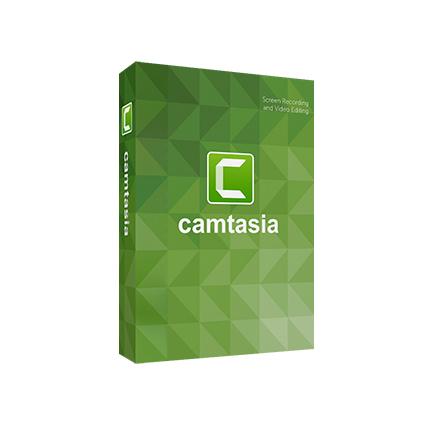用PyTorch实现混合专家网络(MEN)模型
 发布于2024-11-04 阅读(0)
发布于2024-11-04 阅读(0)
扫一扫,手机访问
Mixtral 8x7B的推出在开放AI领域引起了广泛关注,特别是混合专家(Mixture-of-Experts:MoEs)这一概念被大家所熟知。混合专家(MoE)概念象征着协作智能,体现了整体大于部分之和的理念。MoE模型整合了多种专家模型的优势,以提供更准确的预测。它由一个门控网络和一组专家网络构成,每个专家网络都擅长处理特定任务的不同方面。通过合理分配任务和权重,MoE模型能够利用专家的特长,从而提高整体的预测性能。这种协作式的智能模型为AI领域的发展带来了新的突破,将在未来的应用中发挥重要作用。
本文将使用PyTorch实现MoE模型。在介绍具体代码前,先简单介绍混合专家的体系结构。
MoE架构
MoE由两种类型的网络组成:(1)专家网络和(2)门控网络。
专家网络是一种采用专有模型的方法,在数据的一个子集中得到良好的表现。它的核心理念是通过多个优势互补的专家来覆盖问题空间,确保全面解决问题。每个专家模型经过训练,具备独特的能力和经验,从而提高整体系统的性能和效果。通过专家网络的使用,可以有效地应对复杂的任务和需求,提供更好的解决方案。
门控网络是一种用于指挥、协调或管理专家贡献的网络。它通过学习和权衡不同网络对不同类型输入的处理能力,来决定哪个网络最擅长处理特定的输入。训练有素的门控网络可以评估新的输入向量,并根据专家的熟练程度将处理任务分配给最合适的专家或专家组合。门控网络会根据专家的输出与当前输入的相关性动态调整权重,以确保个性化的响应。这种动态调整权重的机制使得门控网络能够灵活地适应不同的情境和需求。

上图显示了MoE中的处理流程。混合专家模型的优点在于它的简单。通过学习复杂的问题空间以及专家在解决问题时的反应,MoE模型有助于产生比单个专家更好的解决方案。门控网络作为一个有效的管理者,评估情景并将任务传递给最佳专家。当新数据输入时,模型可以通过重新评估专家对新输入的优势来适应,从而产生灵活的学习方法。 简而言之,MoE模型利用多个专家的知识和经验来解决复杂的问题。通过一个门控网络的管理,模型能够根据不同的情景选择最适合的专家来处理任务。这种方法的优势在于它能够产生比单个专家更好的解决方案,并且能够灵活地适应新的输入数据。总的来说,MoE模型是一种有效且简单的方法,可以用于解决各种复杂的问题。
MoE为部署机器学习模型提供了巨大的好处。以下是两个显著的好处。
MoE的核心优势在于其多元化和专业化的专家网络。MoE的设置能够高精度地处理多个领域的问题,这是单一模型难以达到的。
MoE具有固有的可伸缩性。随着任务复杂性的增加,更多的专家可以无缝地集成到系统中,扩大专业知识的范围,而不需要改变其他专家模型。换句话说,MoE能够将预先训练过的专家打包到机器学习系统中,帮助系统应对不断增长的任务要求。
混合专家模型在许多领域都有应用,包括推荐系统、语言建模和各种复杂的预测任务。有传言称,GPT-4是由多个专家组成的。尽管我们无法确认,但类似gpt -4的模型将通过MoE方法利用多个模型的力量来提供最佳结果。
Pytorch代码
我们这里不讨论Mixtral 8x7B这种大模型中使用的MOE技术,而是我们编写一个简单的、可以应用在任何任务中的自定义MOE,通过代码我们可以了解MOE的工作原理,这样对理解MOE在大模型中的工作方式是非常有帮助的。
下面我们将一段一段地介绍PyTorch的代码实现。
导入库:
import torch import torch.nn as nn import torch.optim as optim
定义专家模型:
class Expert(nn.Module): def __init__(self, input_dim, hidden_dim, output_dim): super(Expert, self).__init__() self.layer1 = nn.Linear(input_dim, hidden_dim) self.layer2 = nn.Linear(hidden_dim, output_dim) def forward(self, x): x = torch.relu(self.layer1(x)) return torch.softmax(self.layer2(x), dim=1)
这里我们定义了一个简单的专家模型,可以看到它是一个2层的mlp,使用了relu激活,最后使用softmax输出分类概率。
定义门控模型:
# Define the gating model class Gating(nn.Module): def __init__(self, input_dim,num_experts, dropout_rate=0.1): super(Gating, self).__init__() # Layers self.layer1 = nn.Linear(input_dim, 128) self.dropout1 = nn.Dropout(dropout_rate) self.layer2 = nn.Linear(128, 256) self.leaky_relu1 = nn.LeakyReLU() self.dropout2 = nn.Dropout(dropout_rate) self.layer3 = nn.Linear(256, 128) self.leaky_relu2 = nn.LeakyReLU() self.dropout3 = nn.Dropout(dropout_rate) self.layer4 = nn.Linear(128, num_experts) def forward(self, x): x = torch.relu(self.layer1(x)) x = self.dropout1(x) x = self.layer2(x) x = self.leaky_relu1(x) x = self.dropout2(x) x = self.layer3(x) x = self.leaky_relu2(x) x = self.dropout3(x) return torch.softmax(self.layer4(x), dim=1)
门控模型更复杂,有三个线性层和dropout层用于正则化以防止过拟合。它使用ReLU和LeakyReLU激活函数引入非线性。最后一层的输出大小等于专家的数量,并对这些输出应用softmax函数。输出权重,这样可以将专家的输出与之结合。
说明:其实门控网络,或者叫路由网络是MOE中最复杂的部分,因为它涉及到控制输入到那个专家模型,所以门控网络也有很多个设计方案,例如(如果我没记错的话)Mixtral 8x7B 只是取了8个专家中的top2。所以我们这里不详细讨论各种方案,只是介绍其基本原理和代码实现。
完整的MOE模型:
class MoE(nn.Module): def __init__(self, trained_experts): super(MoE, self).__init__() self.experts = nn.ModuleList(trained_experts) num_experts = len(trained_experts) # Assuming all experts have the same input dimension input_dim = trained_experts[0].layer1.in_features self.gating = Gating(input_dim, num_experts) def forward(self, x): # Get the weights from the gating network weights = self.gating(x) # Calculate the expert outputs outputs = torch.stack([expert(x) for expert in self.experts], dim=2) # Adjust the weights tensor shape to match the expert outputs weights = weights.unsqueeze(1).expand_as(outputs) # Multiply the expert outputs with the weights and # sum along the third dimension return torch.sum(outputs * weights, dim=2)
这里主要看前向传播的代码,通过输入计算出权重和每个专家给出输出的预测,最后使用权重将所有专家的结果求和最终得到模型的输出。
这个是不是有点像“集成学习”。
测试
下面我们来对我们的实现做个简单的测试,首先生成一个简单的数据集:
# Generate the dataset num_samples = 5000 input_dim = 4 hidden_dim = 32 # Generate equal numbers of labels 0, 1, and 2 y_data = torch.cat([ torch.zeros(num_samples // 3), torch.ones(num_samples // 3), torch.full((num_samples - 2 * (num_samples // 3),), 2)# Filling the remaining to ensure exact num_samples ]).long() # Biasing the data based on the labels x_data = torch.randn(num_samples, input_dim) for i in range(num_samples): if y_data[i] == 0: x_data[i, 0] += 1# Making x[0] more positive elif y_data[i] == 1: x_data[i, 1] -= 1# Making x[1] more negative elif y_data[i] == 2: x_data[i, 0] -= 1# Making x[0] more negative # Shuffle the data to randomize the order indices = torch.randperm(num_samples) x_data = x_data[indices] y_data = y_data[indices] # Verify the label distribution y_data.bincount() # Shuffle the data to ensure x_data and y_data remain aligned shuffled_indices = torch.randperm(num_samples) x_data = x_data[shuffled_indices] y_data = y_data[shuffled_indices] # Splitting data for training individual experts # Use the first half samples for training individual experts x_train_experts = x_data[:int(num_samples/2)] y_train_experts = y_data[:int(num_samples/2)] mask_expert1 = (y_train_experts == 0) | (y_train_experts == 1) mask_expert2 = (y_train_experts == 1) | (y_train_experts == 2) mask_expert3 = (y_train_experts == 0) | (y_train_experts == 2) # Select an almost equal number of samples for each expert num_samples_per_expert = \ min(mask_expert1.sum(), mask_expert2.sum(), mask_expert3.sum()) x_expert1 = x_train_experts[mask_expert1][:num_samples_per_expert] y_expert1 = y_train_experts[mask_expert1][:num_samples_per_expert] x_expert2 = x_train_experts[mask_expert2][:num_samples_per_expert] y_expert2 = y_train_experts[mask_expert2][:num_samples_per_expert] x_expert3 = x_train_experts[mask_expert3][:num_samples_per_expert] y_expert3 = y_train_experts[mask_expert3][:num_samples_per_expert] # Splitting the next half samples for training MoE model and for testing x_remaining = x_data[int(num_samples/2)+1:] y_remaining = y_data[int(num_samples/2)+1:] split = int(0.8 * len(x_remaining)) x_train_moe = x_remaining[:split] y_train_moe = y_remaining[:split] x_test = x_remaining[split:] y_test = y_remaining[split:] print(x_train_moe.shape,"\n", x_test.shape,"\n", x_expert1.shape,"\n", x_expert2.shape,"\n", x_expert3.shape)
这段代码创建了一个合成数据集,其中包含三个类标签——0、1和2。基于类标签对特征进行操作,从而在数据中引入一些模型可以学习的结构。
数据被分成针对个别专家的训练集、MoE模型和测试集。我们确保专家模型是在一个子集上训练的,这样第一个专家在标签0和1上得到很好的训练,第二个专家在标签1和2上得到更好的训练,第三个专家看到更多的标签2和0。
我们期望的结果是:虽然每个专家对标签0、1和2的分类准确率都不令人满意,但通过结合三位专家的决策,MoE将表现出色。
模型初始化和训练设置:
# Define hidden dimension output_dim = 3 hidden_dim = 32 epochs = 500 learning_rate = 0.001 # Instantiate the experts expert1 = Expert(input_dim, hidden_dim, output_dim) expert2 = Expert(input_dim, hidden_dim, output_dim) expert3 = Expert(input_dim, hidden_dim, output_dim) # Set up loss criterion = nn.CrossEntropyLoss() # Optimizers for experts optimizer_expert1 = optim.Adam(expert1.parameters(), lr=learning_rate) optimizer_expert2 = optim.Adam(expert2.parameters(), lr=learning_rate) optimizer_expert3 = optim.Adam(expert3.parameters(), lr=learning_rate)
实例化了专家模型和MoE模型。定义损失函数来计算训练损失,并为每个模型设置优化器,在训练过程中执行权重更新。
训练的步骤也非常简单
# Training loop for expert 1 for epoch in range(epochs):optimizer_expert1.zero_grad()outputs_expert1 = expert1(x_expert1)loss_expert1 = criterion(outputs_expert1, y_expert1)loss_expert1.backward()optimizer_expert1.step() # Training loop for expert 2 for epoch in range(epochs):optimizer_expert2.zero_grad()outputs_expert2 = expert2(x_expert2)loss_expert2 = criterion(outputs_expert2, y_expert2)loss_expert2.backward()optimizer_expert2.step() # Training loop for expert 3 for epoch in range(epochs):optimizer_expert3.zero_grad()outputs_expert3 = expert3(x_expert3)loss_expert3 = criterion(outputs_expert3, y_expert3)loss_expert3.backward()
每个专家使用基本的训练循环在不同的数据子集上进行单独的训练。循环迭代指定数量的epoch。
下面是我们MOE的训练
# Create the MoE model with the trained experts moe_model = MoE([expert1, expert2, expert3]) # Train the MoE model optimizer_moe = optim.Adam(moe_model.parameters(), lr=learning_rate) for epoch in range(epochs):optimizer_moe.zero_grad()outputs_moe = moe_model(x_train_moe)loss_moe = criterion(outputs_moe, y_train_moe)loss_moe.backward()optimizer_moe.step()
MoE模型是由先前训练过的专家创建的,然后在单独的数据集上进行训练。训练过程类似于单个专家的训练,但现在门控网络的权值在训练过程中更新。
最后我们的评估函数:
# Evaluate all models def evaluate(model, x, y):with torch.no_grad():outputs = model(x)_, predicted = torch.max(outputs, 1)correct = (predicted == y).sum().item()accuracy = correct / len(y)return accuracy
evaluate函数计算模型在给定数据上的精度(x代表样本,y代表预期标签)。准确度计算为正确预测数与预测总数之比。
结果如下:
accuracy_expert1 = evaluate(expert1, x_test, y_test) accuracy_expert2 = evaluate(expert2, x_test, y_test) accuracy_expert3 = evaluate(expert3, x_test, y_test) accuracy_moe = evaluate(moe_model, x_test, y_test) print("Expert 1 Accuracy:", accuracy_expert1) print("Expert 2 Accuracy:", accuracy_expert2) print("Expert 3 Accuracy:", accuracy_expert3) print("Mixture of Experts Accuracy:", accuracy_moe) #Expert 1 Accuracy: 0.466 #Expert 2 Accuracy: 0.496 #Expert 3 Accuracy: 0.378 #Mixture of Experts Accuracy: 0.614可以看到
专家1正确预测了测试数据集中大约46.6%的样本的类标签。
专家2表现稍好,正确预测率约为49.6%。
专家3在三位专家中准确率最低,正确预测的样本约为37.8%。
而MoE模型显著优于每个专家,总体准确率约为61.4%。
总结
我们测试的输出结果显示了混合专家模型的强大功能。该模型通过门控网络将各个专家模型的优势结合起来,取得了比单个专家模型更高的精度。门控网络有效地学习了如何根据输入数据权衡每个专家的贡献,以产生更准确的预测。混合专家利用了各个模型的不同专业知识,在测试数据集上提供了更好的性能。
同时也说明我们可以在现有的任务上尝试使用MOE来进行测试,也可以得到更好的结果。
下一篇:win11添加美式键盘教程
产品推荐
-

售后无忧
立即购买>- DAEMON Tools Lite 10【序列号终身授权 + 中文版 + Win】
-
¥150.00
office旗舰店
-

售后无忧
立即购买>- DAEMON Tools Ultra 5【序列号终身授权 + 中文版 + Win】
-
¥198.00
office旗舰店
-

售后无忧
立即购买>- DAEMON Tools Pro 8【序列号终身授权 + 中文版 + Win】
-
¥189.00
office旗舰店
-

售后无忧
立即购买>- CorelDRAW X8 简体中文【标准版 + Win】
-
¥1788.00
office旗舰店
-
 正版软件
正版软件
- 怎样在欧易购买狗狗币
- 在欧易购买狗狗币的步骤为:创建欧易账户并充值。在币币交易页面搜索“DOGE/USDT”。输入数量或金额,选择订单类型并点击“买入DOGE”。确认交易,待匹配后自动完成,狗狗币将存入欧易钱包。如何在欧易购买狗狗币步骤1:创建欧易账户访问欧易官方网站(https://www.okx.com/)并注册一个账户。输入您的电子邮件地址、创建密码并填写其他必要信息。步骤2:充值欧易账户登录您的欧易账户,点击页面顶部的“充值”按钮。选择一种充值方式(如银行卡、USDT等)。按照说明进行充值。步骤3:购买狗狗币点击页面顶
- 14分钟前 0
-
 正版软件
正版软件
- Wormhole治理代币W空投上线!不到24小时交易量破14亿美元
- 120Btc.com上的跨链协议Wormhole原生治理代币“W”昨晚正式开放空投认领,上架各大交易所,在加密货币市场引起了巨大轰动。上线不到24小时交易量已冲破14亿美元,热烈程度一度导致Solana去中心化交易所OpenBook当机。CoinGecko数据显示,W昨晚以令人印象深刻的29.8亿美元市值,165亿美元的完全稀释估值(FDV),率先在OpenBook登台,开盘价为1.66美元,预料上线约两小时后就飙升超过25%,至1.25美元,直到凌晨1点又反弹回升至1.6美元。虽然虚拟代币空投、上线后暴
- 19分钟前 元宇宙 Web3.0 Arbitrum 比特币爆仓 0
-
 正版软件
正版软件
- mexc抹茶交易所排名
- 抹茶交易所排名第十,优势包括交易量大、支持多种加密货币、费用低、安全可靠、高流动性;不足包括新手友好度低、缺乏法币交易、受监管审查。
- 34分钟前 0
-
 正版软件
正版软件
- 比特币第4次减半完成!区块奖励降至3.125枚BTC 币价6.4万美元震荡
- 本站(120bTC.coM):今日早上8点09分,比特币成功在区块高度840000完成第四次减半!据比特币区块浏览器mempool信息,比特币网络的区块奖励从6.25枚BTC减半至3.125枚BTC,第一个3.125BTC的区块由矿池ViaBTC开采。值得注意的是,该区块手续费高达37.626枚BTC,价值约2,402,358美元,最高的手续费为3,604,819sat/vB,创下历史记录。该区块的总奖励为40.751枚BTC,价值约2,601,886美元。比特币网络高优先级费用突破185美元/vB手续费
- 49分钟前 比特币减半 BTC挖矿 主流币 莱特币减半 0
-
 正版软件
正版软件
- 欧易okex如何买狗狗币
- 在欧易OKEx上购买狗狗币的步骤:创建欧易OKEx账户。存款。找到狗狗币交易对(如DOGE/USDT)。在买单区域输入购买数量和价格。确认并交易。
- 1小时前 21:09 0
最新发布
-
 1
1
- 阿里追捧的中台,“热度”退了?
- 1857天前
-
 2
2
- Overture设置踏板标记的方法
- 1694天前
-
 3
3
- 思杰马克丁取得CleanMyMac中国区独家发行授权
- 1684天前
-
 4
4
- IBM:20万台Mac让公司职工在工作中更快乐 更多产
- 1882天前
-
 5
5
- 报道称微软一直在悄然游说反对“维修权”立法!
- 1848天前
-
 6
6
- 美国怀疑华为窃取商业机密 华为:身正不怕影子斜
- 1844天前
-
 7
7
- 三星被曝正与联发科接洽 A系列手机有望搭载其5G芯片
- 1859天前
-
 8
8
- 环球墨非完成千万级融资 联合企业集团投资
- 1881天前
-
 9
9
相关推荐
热门关注
-

- Xshell 6 简体中文
- ¥899.00-¥1149.00
-

- DaVinci Resolve Studio 16 简体中文
- ¥2550.00-¥2550.00
-

- Camtasia 2019 简体中文
- ¥689.00-¥689.00
-

- Luminar 3 简体中文
- ¥288.00-¥288.00
-

- Apowersoft 录屏王 简体中文
- ¥129.00-¥339.00